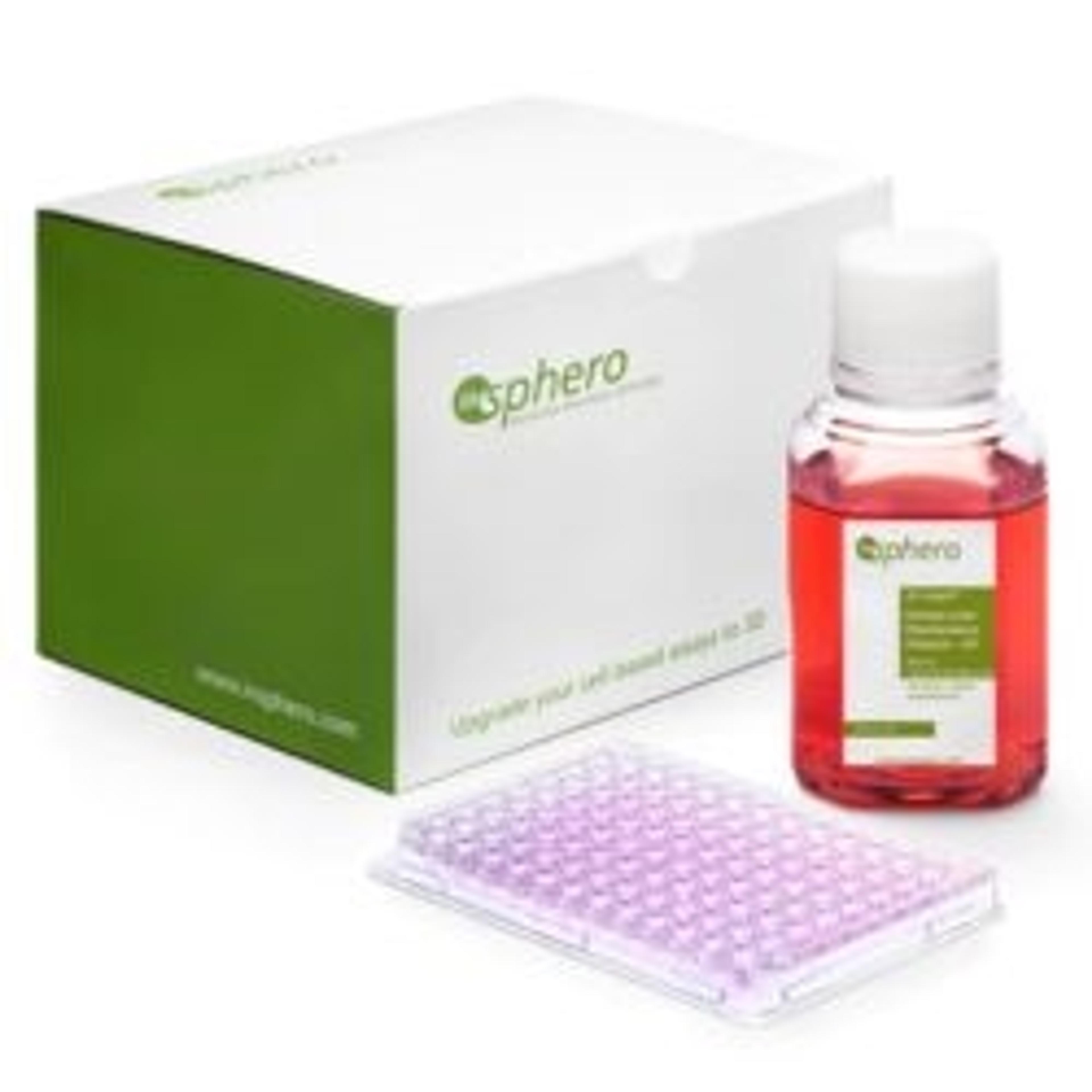Enhanced Sensitivity of 3D Liver Microtissues Highlighted at Annual Screening Congress
16 Dec 2014
InSphero AG, the world’s leading provider of 3D microtissues for toxicity and efficacy testing, has announced that data presented recently by Genentech (South San Francisco, CA) supports InSphero’s 3D liver microtissues as a more predictive model system for assessment of liver toxicity.
Findings presented at the 2nd Annual Functional Analysis and Screening Technologies (FAST) Congress summarized a collaborative project to assess the response of InSphero’s 3D InSight™ Human Liver Microtissues to 42 known liver toxins, and compared the results to Genentech’s in-house 2-dimensional hepatocyte toxicity assay. Results indicated 3D liver spheroids were more sensitive, detecting cytotoxicity at significantly lower concentrations in 13 of the 42 compounds, with similar results found whether the compounds were repeatedly administered for 6 or 14 days in culture. The 3D liver model includes both hepatocytes and specialized immune cells called Kupffer cells that mediate inflammation in the liver. Data presented also indicated the ability of the liver microtissues to detect immune-mediated (idiosyncratic) toxicity in response to Trovafloxacin, a drug withdrawn from the market due to inflammation-mediated liver toxicity not detected in pre-clinical safety testing.
Dr. Jens M. Kelm, co-founder and Chief Scientific Officer of InSphero, notes that while the study is preliminary, other large pharma clients and collaborators are experiencing similar results, which bodes well for companies looking to identify toxic compounds with better accuracy and cost-effectiveness. “The improved sensitivity of our 3D liver microtissues enables companies to de-risk more drug candidates than with routinely run in-house primary hepatocyte assays. The improved longevity of 3D liver microtissues means they may also prove useful as a model to determine efficacy and off-target toxicity in large molecule antibody-drug conjugates (ADCs). This could save companies millions of dollars by reducing the number of compounds that fail in costly late-stage animal models and clinical trials.”
Dr. Kelm also presented at the FAST Congress in a talk featuring the breadth of InSphero’s microtissue portfolio, and ongoing work to interconnect microtissues from different organs to create a “Body-on-a-Chip” for advanced screening and safety testing protocols.

